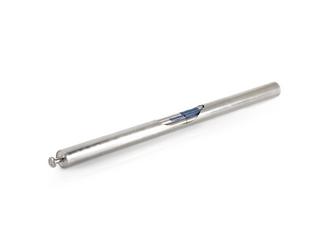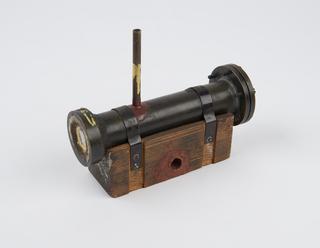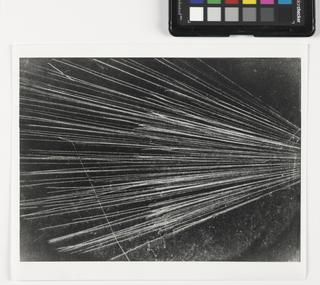






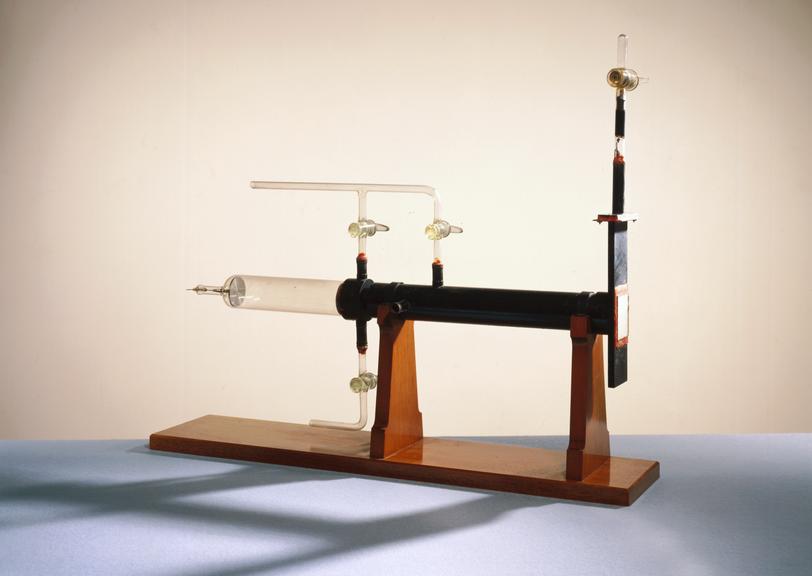
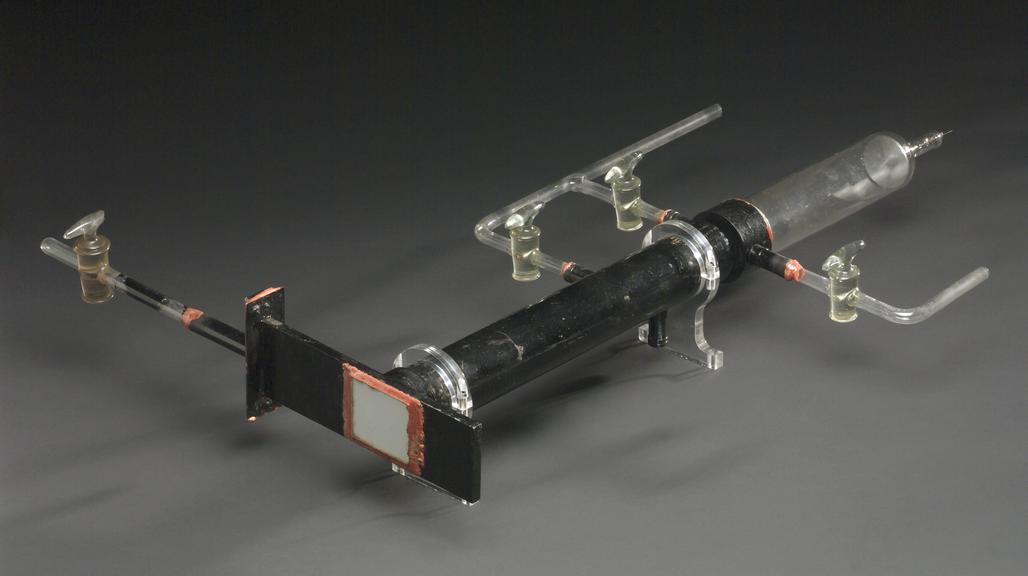
Original electron diffraction camera used by G P Thomson.
Made in Aberdeen by G P Thomson (1892-1975), the son of J J Thomson (1856-1940) who identified the electron. Working in the same field, G P Thomson observed diffraction of electrons passing through thin gold foil, recorded on photographic plates as concentric rings of varying intensity about the incident beam. This supported the idea of de Brogle that particles had wave-like properties. In 1937, G P Thomson received the Nobel Prize for this work, jointly with the American physicist C J Davisson (1881-1958) who also observed electron diffraction using nickel crystals.
Details
- Category:
- Nuclear Physics
- Object Number:
- 1948-24
- Materials:
- glass, metal, sealing wax and metal (painted)
- Measurements:
-
overall: 580 mm x 780 mm x 105 mm, 3.6kg
- type:
- cameras and electron diffraction cameras
- credit:
- Sir George Thomson
